Remete Gorge and Alsó-Jegenye Valley are quite close to each other, so the two natural beauties can be explored comfortably in a day. The places are also easy to reach. The easiest way to get to Pesthidegkút in the 2nd District is from Széll Kálmán Square and Óbuda by public transport, and there is a bus line from Hűvösvölgy directly going to the entrance of both valleys. There are parking facilities on-site, but unfortunately, the number of parking spaces is a bit undersized, especially on weekends. However, this should not discourage hikers in any way.
It is worth starting the tour of the Remete Gorge from Ördögárok Street. This practically means the corner of Ördögárok Street and Csatlós Street in Máriaremete. If there are no free parking spaces here, it is worth parking next to the neighbouring Church of the Nativity of the Blessed Virgin Mary.
The church has been an important pilgrimage site for centuries, and the old trees in its garden are a real rarity in Budapest. The church and its associated buildings were built in the Neo-Gothic style at the turn of the 19th and 20th centuries. Remarkable people can be associated with the church: it was designed by Ferenc Schönner, consecrated by Mihály Bogisich, Ottokár Prohászka blessed the new bells after World War I, and Pope John Paul II granted the church the title of basilica minor in 1991.
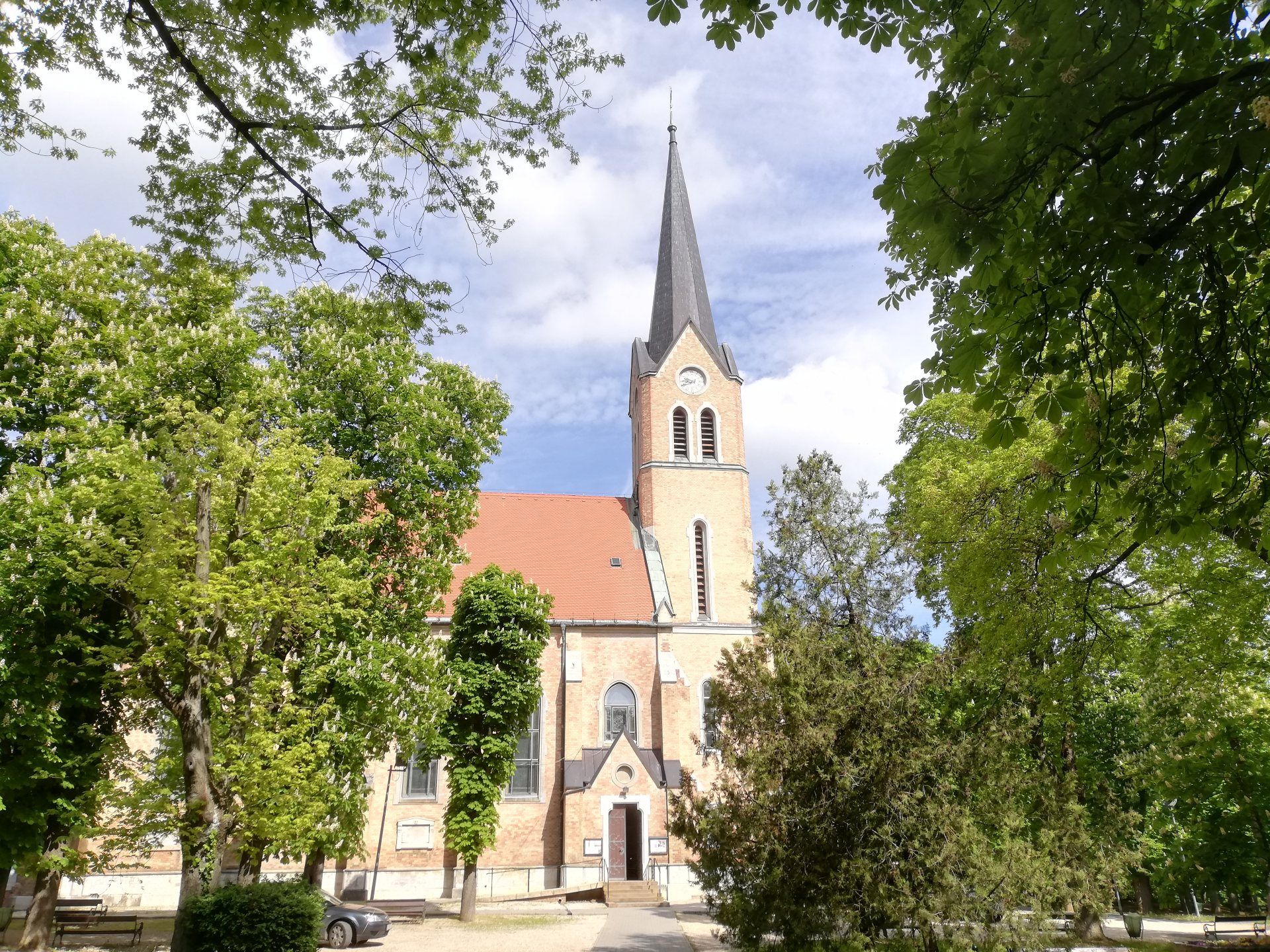
The Church of the Nativity of the Blessed Virgin Mary in Máriaremete, was designed by Ferenc Schönner (Photo: Dávid Palotás/pestbuda.hu)
The buildings with the park radiate an ancient atmosphere. As mentioned, the church is the sacred centre of the area, an important pilgrimage site to this day. If time allows, it is worth admiring the interior of the church. It is no coincidence that the route of the National Blue Trail, as well as the purple and blue Mary's Way (name of the pilgrimage routes in Central Europe), pass here. From here, all the hiking trails except the blue Mary's Way take us to the gorge if we head west. The Mary's Way also touches the Holy Well of Máriaremete in the nearby valley.
The Remete Gorge, as its name suggests, was home to hermits because of the numerous caves in the area. They moved here after the retreat of the Turks, but they likely lived here as early as the Middle Ages. Moreover, in the caves, the tools of ancient and prehistoric people were found.
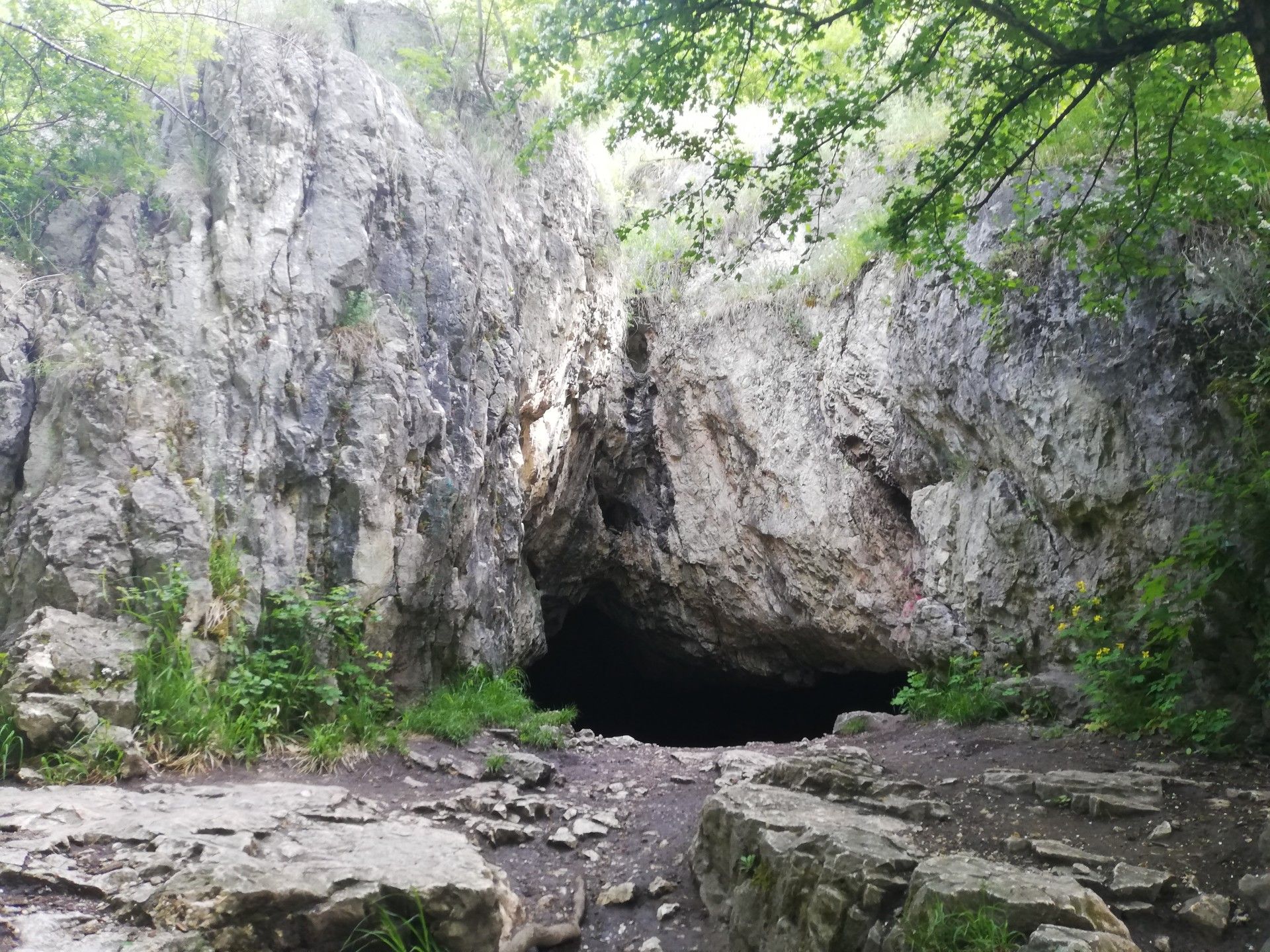
The entrance to the Remete Cave, after the retreat of the Turks, hermits lived in the caves (Photo: Dávid Palotás/pestbuda.hu)
The hills rising on both sides of the valley are formed of Triassic dolomite and Dachstein limestone. With a little luck, we can also find Triassic Megalodus mussel remains in the rocks. A stream called Ördög-árok ('Devil's Trench') runs in the valley, but its water flow is quite variable. This is the stream that flows into the Danube at the Erzsébet Bridge. It was once used to transport sewage, now it is covered from Budagyöngye. It is good to know that this stream also flows under Városmajor and Vérmező.
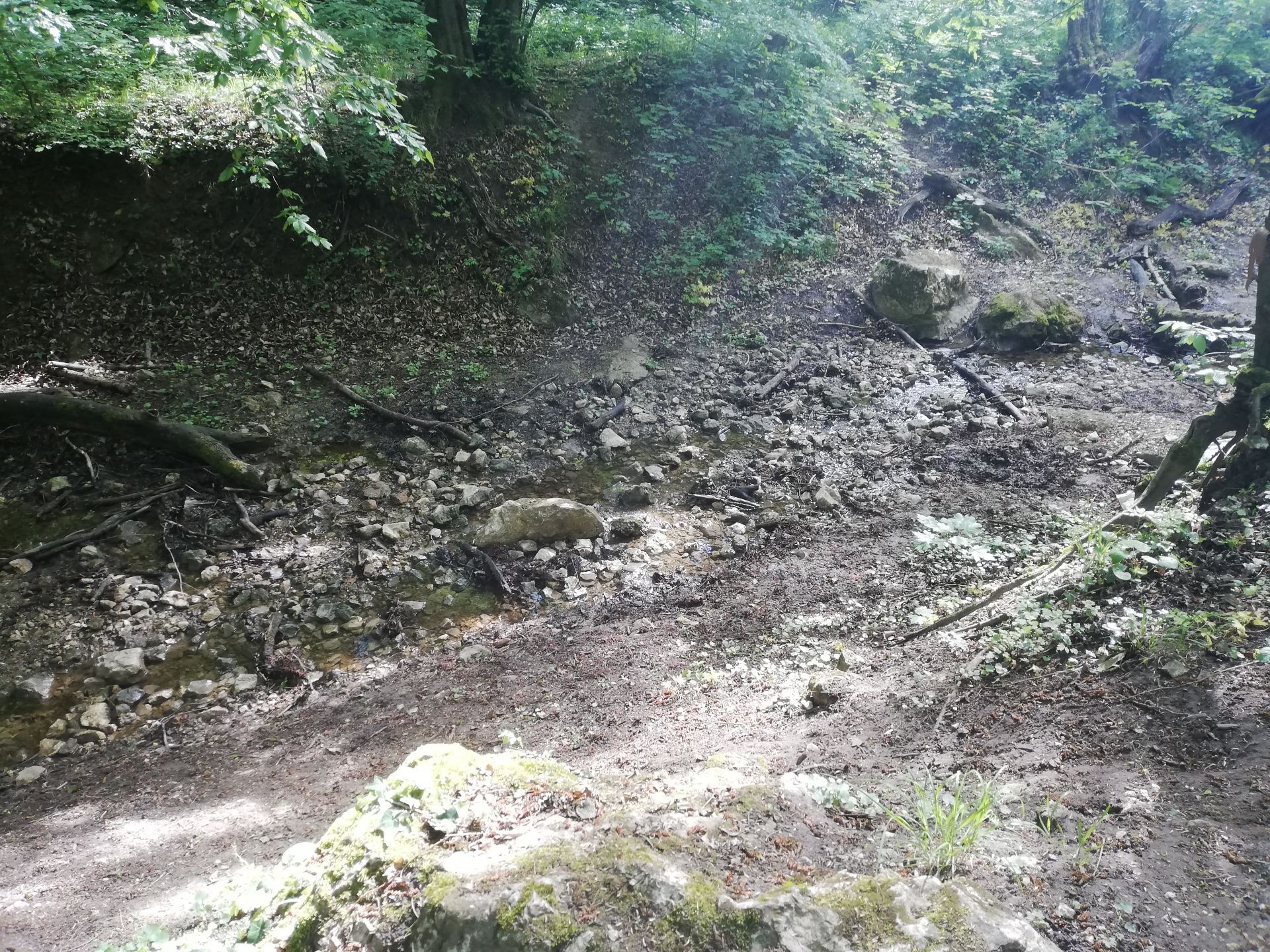
The Ördög-árok is still free to flow here, its water flow is quite variable (Photo: Dávid Palotás/pestbuda.hu)
The tourist trail in the gorge was renovated last year, making it easy to walk, even with a stroller. They were evenly scattered and rammed with stone, and the narrow, detached road sections were filled up and strengthened. An educational trail leads through it.
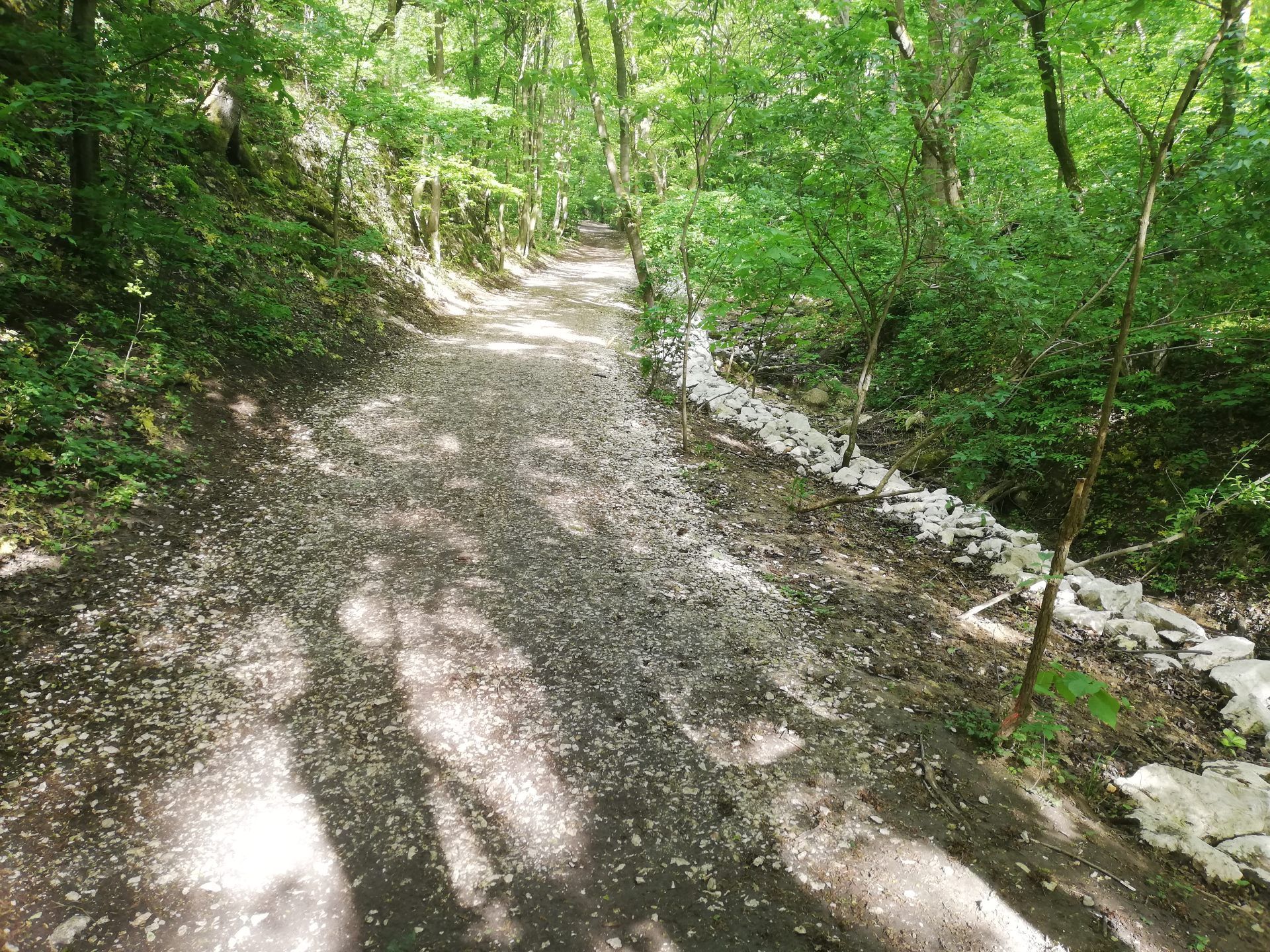
Comfortable walk in the Remete Gorge (Photo: Dávid Palotás/pestbuda.hu)
The valley is not long. The hiking trail winds along the Ördög-árok for barely 1,200 metres. The National Blue Trail and the purple Mary's Way pass through it. There are also ramps to several caves, of which the opening known as the Remete Cave is definitely worth a visit. At the end of the gorge towards Remeteszőlős, it is worth making a small detour of barely 200 metres on the road marked with a blue square to the residential houses. Here is the famous Örkény telephone booth, where you can listen to the writer's One Minute Stories performed by well-known actors.
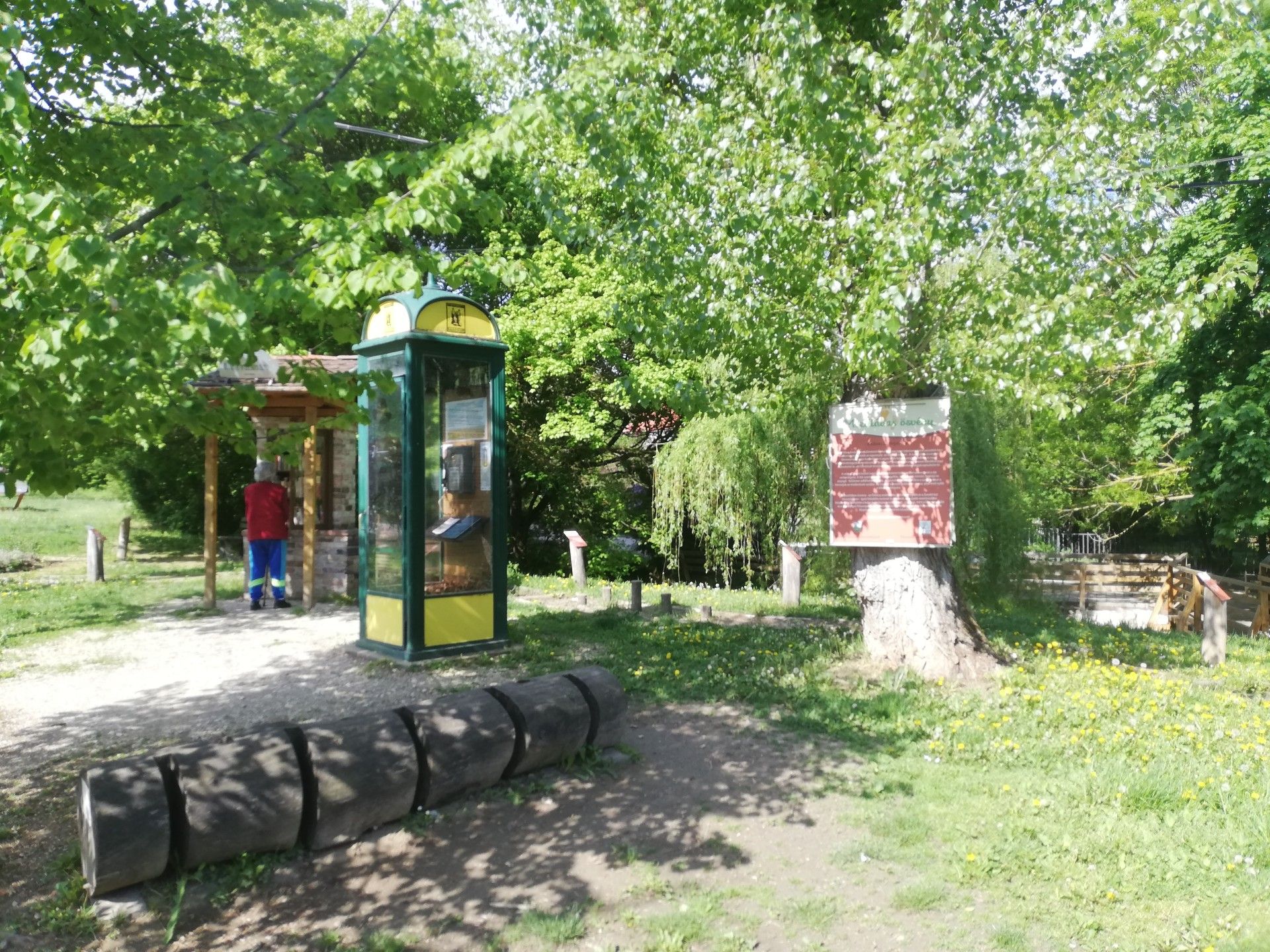
Örkény's telephone booth with the book boutique. The leisure park starts here (Photo: Dávid Palotás/pestbuda.hu)
In addition to the booth, there are free book boutiques and a music fountain, as well as numerous sports facilities, including teqball and pétanque courts. Its new name is Bodzaliget recreation park. From here, hikers have three options to return to the starting point, the church. The shortest and easiest is to go back through the gorge.
Those looking for a more adventurous road and a little panorama can go to the hilltop following the blue C sign at the entrance to Remeteszőlős, on the right side of the barrier. Then they have to deviate from this blue C sign to the left, but it is a small hill, and there is a path going up to the left, so it can hardly be mistaken. From the top, they have to go back here and continue on the circle route that takes them back to the side facing Budapest.
The third option is to not return to the starting point but walk away to another location, the Alsó-Jegenye Valley. This is a more tiring hike. The trail is a total of 12 kilometres, during which you can comfortably walk through both gorges and return to the church by bus. Hikers have to continue up through the right on the blue line from the Remeteszőlős exit through Remete Hill.
The view from here is magnificent, well worth the effort. To the right of the blue lane, the blue cross will branch off where hikers should turn to, then follow the yellow cross, which leads to the Buda yellow stipe tourist sign. Finding it with a map or is easy.
That is where Hidegkúti Road can be reached, where the other fairyland starts after the gas station, further on the Buda yellow tourist sign. The Alsó-Jegenye Valley is no longer limestone and dolomite but mainly marly-sandstone. The emerging yellowish-white cliffs exude a special atmosphere.
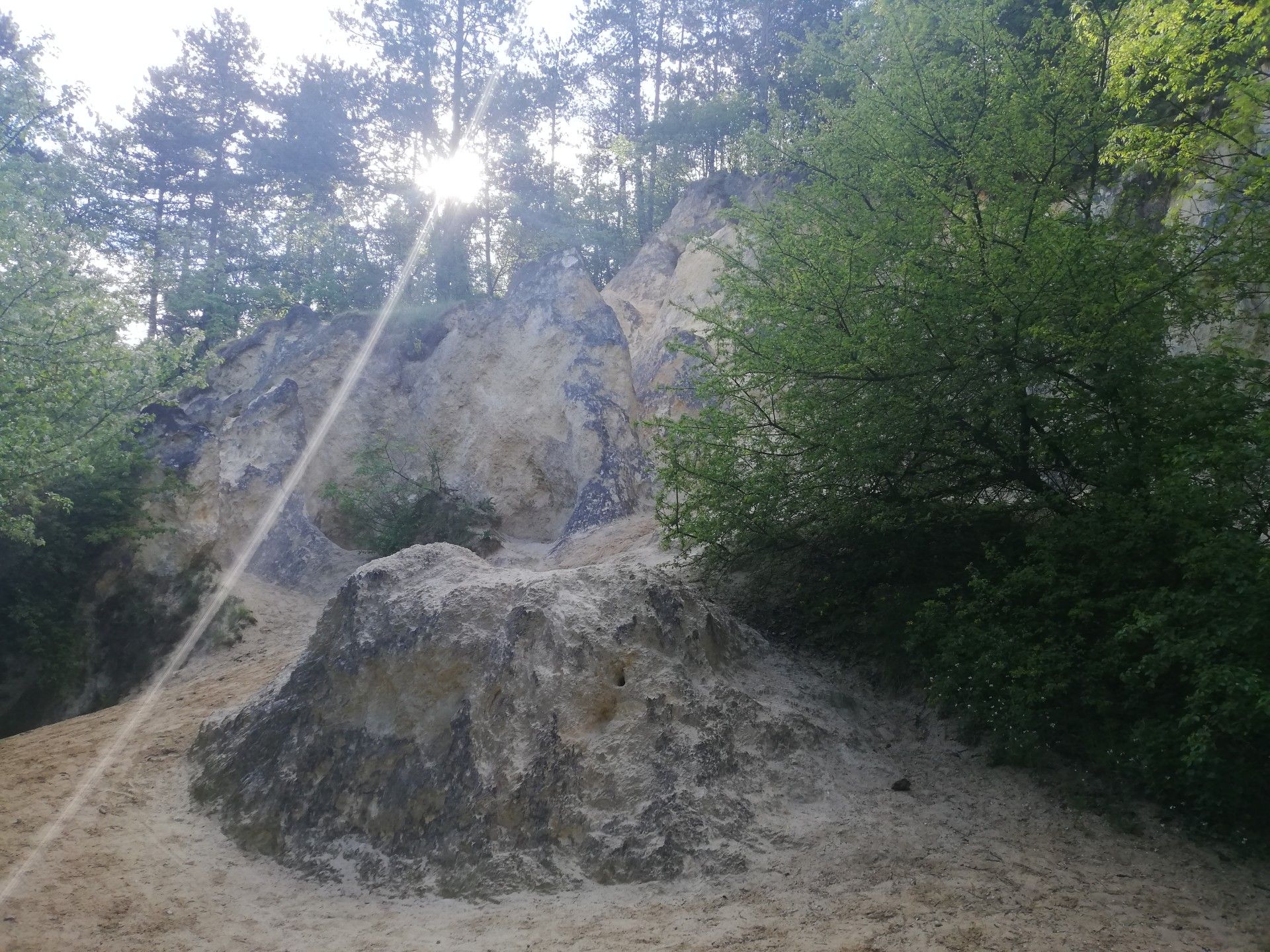
The emerging cliffs give the forest a Mediterranean atmosphere (Photo: Dávid Palotás/pestbuda.hu)
Countless small wooden bridges run across the Paprikás Stream. There are not many other places in Budapest where there are so many bridges, so it deserves some appreciation.
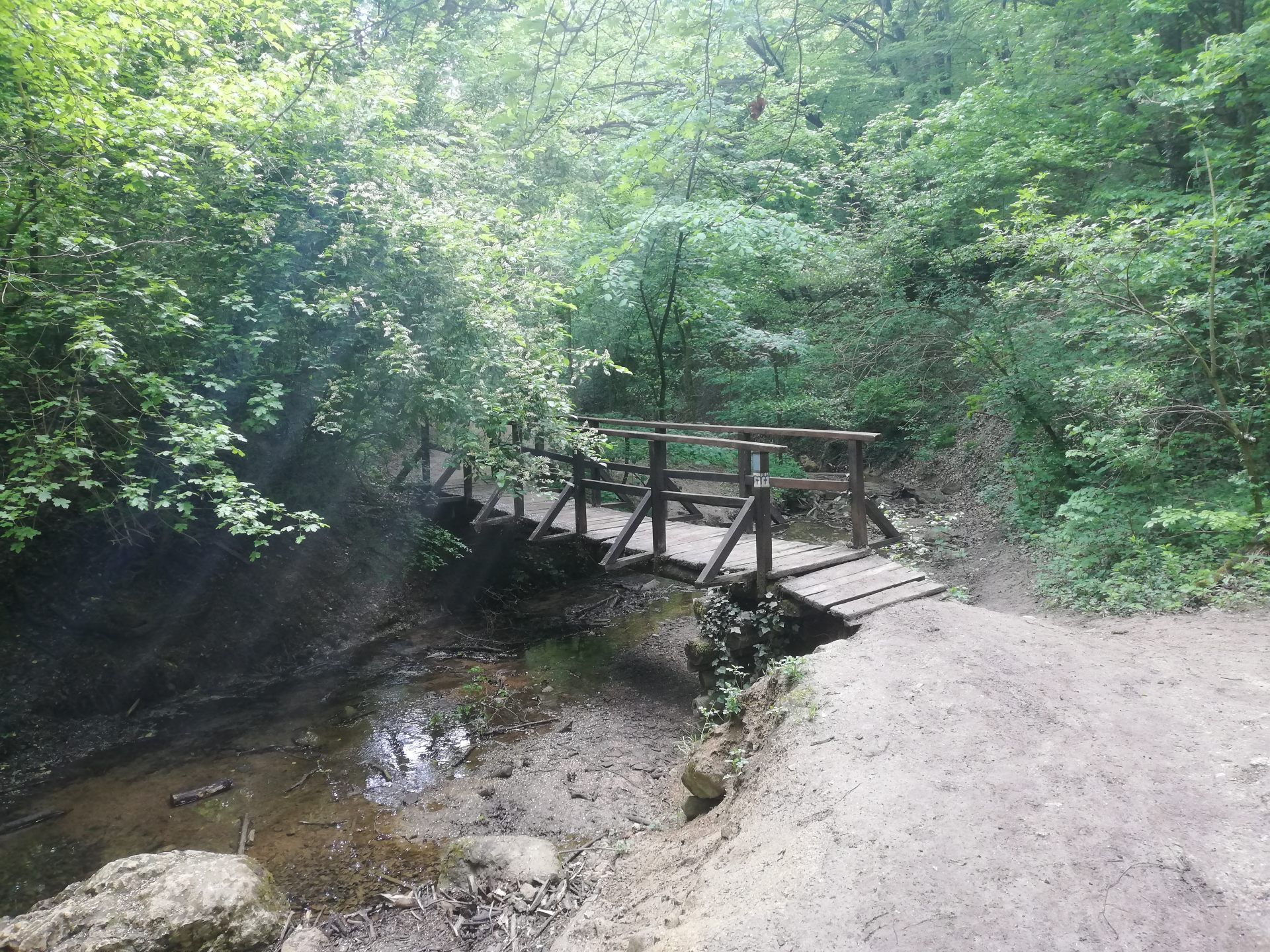
One of the wooden bridges over the Paprikás Stream (Photo: Dávid Palotás/pestbuda.hu)
It is important to mention that hikers should go down to the water on the path that branches where the ripples of the stream can be heard because that is where the most beautiful and largest natural waterfall in the vicinity of Budapest is located. (The waterfall on Gellért Hill was artificially created.) Fortunately, it was left untouched when regulating the stream bed.
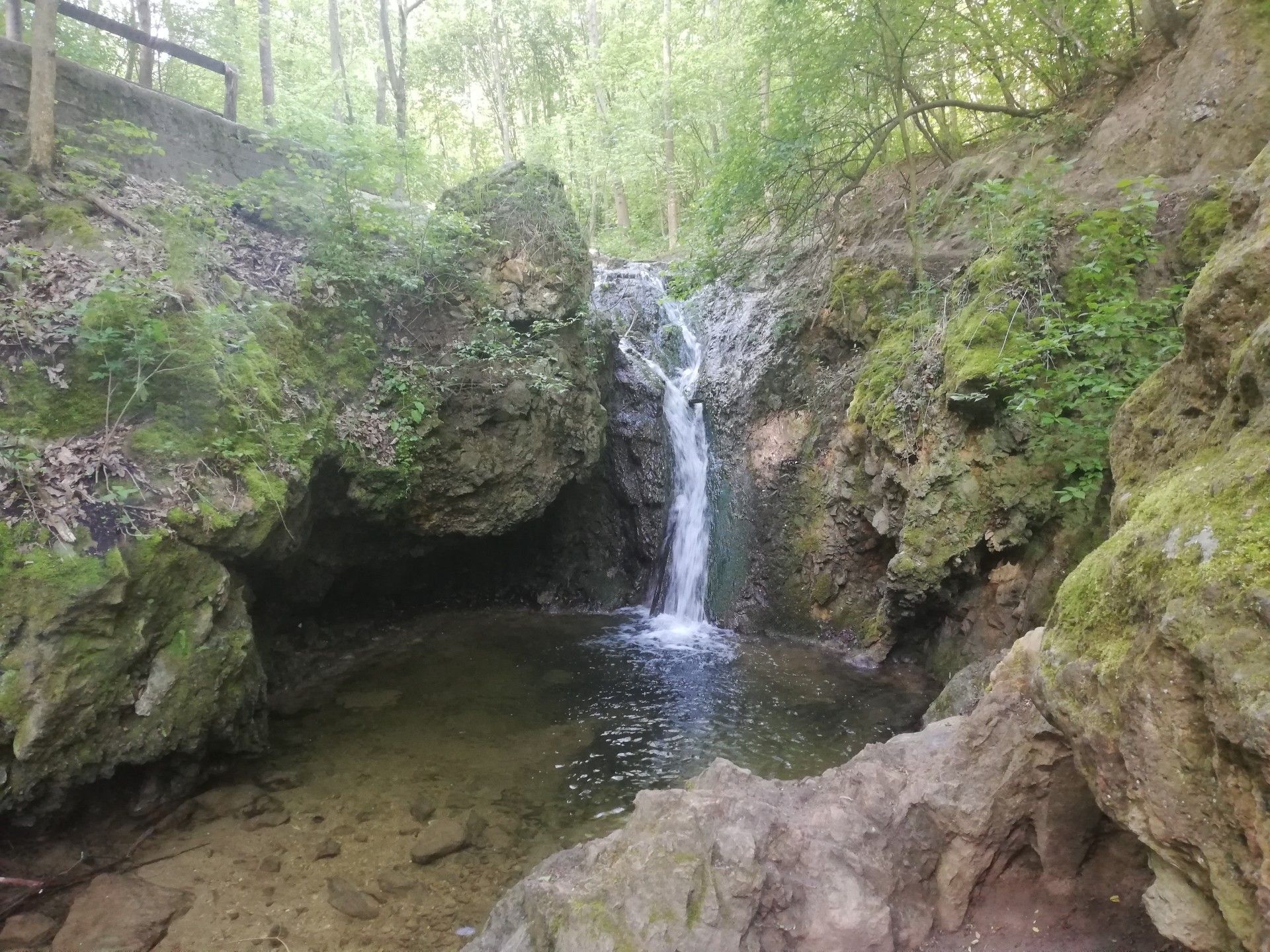
The most beautiful and largest natural waterfall around Budapest in the Alsó-Jegenye Valley (Photo: Dávid Palotás/pestbuda.hu)
Further on, along the creek, resting places and the Rózsika Spring can be found, which is marked by a well carved out of stone. Unfortunately, at the time of writing the article, the wooden bridge is no longer in the best condition here, so hikers should be careful when crossing it. However, drinking from this source is not recommended either.
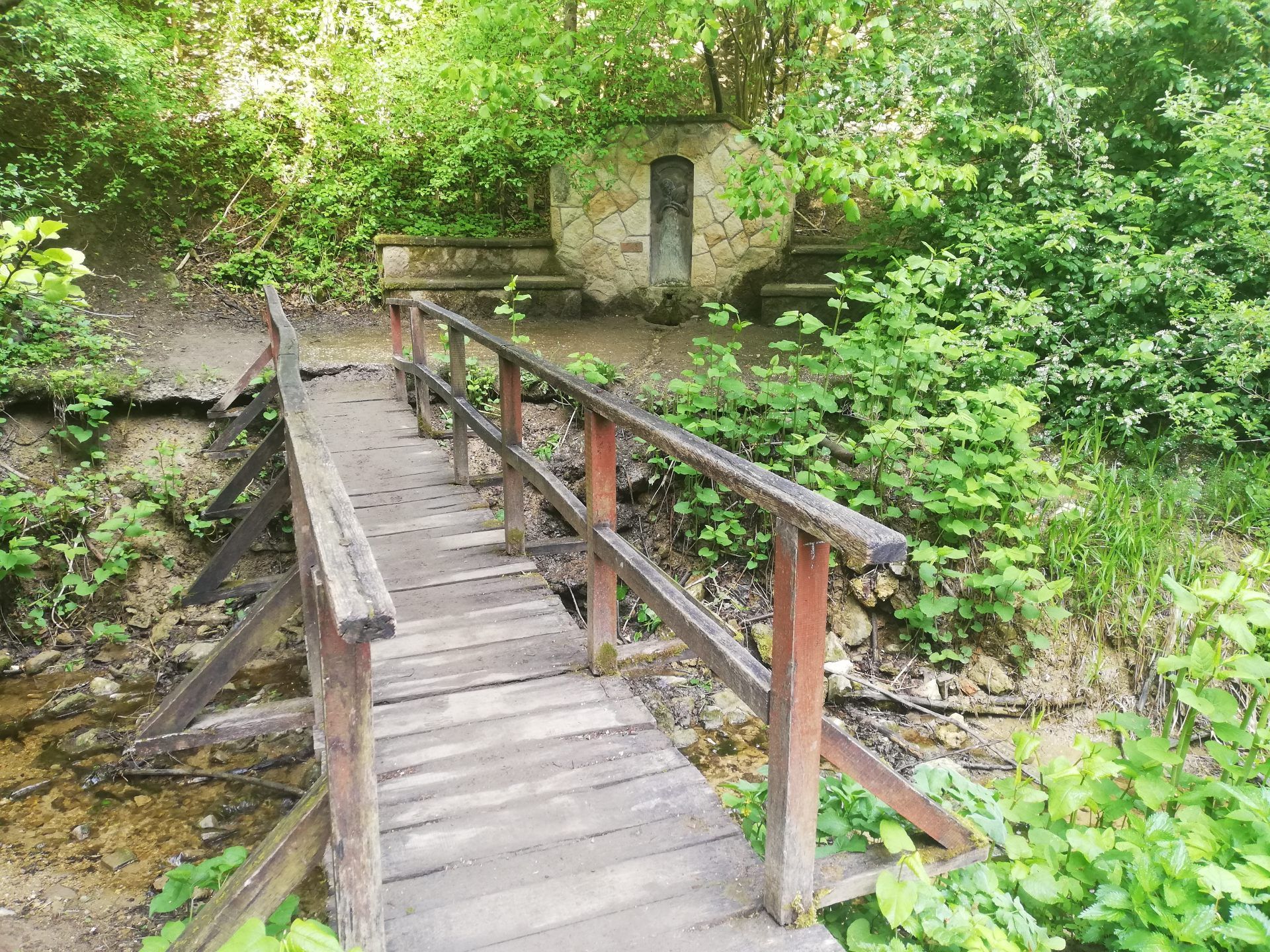
The water of the Rózsika Spring is undrinkable (Photo: Dávid Palotás/pestbuda.hu)
After a kilometre and a half, the valley ends in a clearing: that is the Millennium Clearing. From here, along the stream, it is worth visiting the castle of Solymár, which is also known as Szarkavár. Walking a small circle around with the help of the green lane and the green cross hiking trails, hikers can get back to the Millennium Clearing, from where they can also walk back through the valley.
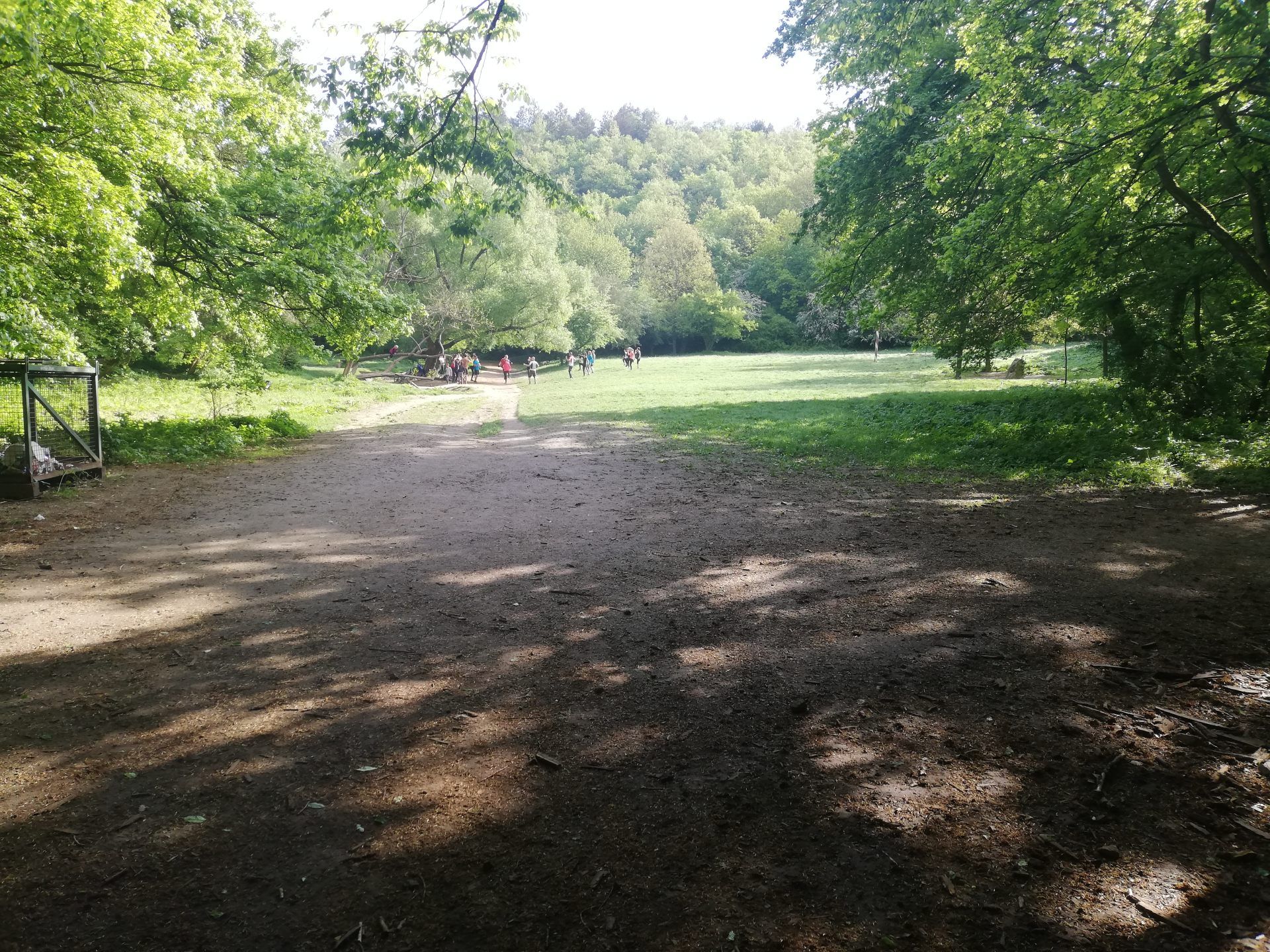
Many people go to the Millennium Clearing to do yoga, train and play (Photo: Dávid Palotás/pestbuda.hu)
Hikers can easily get back to the Máriaremete church, the starting point, by bus from the petrol station.
It is great to see how many not so well-known natural beauties of Budapest and its surroundings are blessed with. These two gorges would deserve more attention because the triad of water, forest, and fresh air prevail here in their entirety. Not to mention the caves and wooden bridges across streams.
Cover photo: The most beautiful and largest natural waterfall in the vicinity of Budapest (Photo: Dávid Palotás/pestbuda.hu)

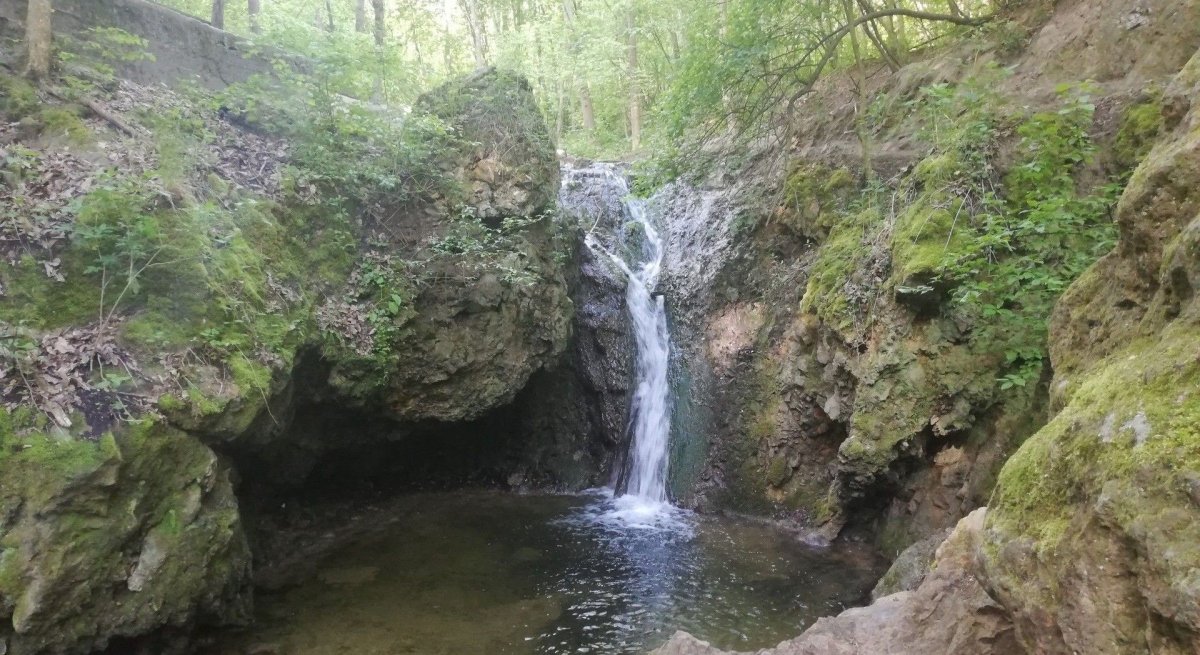
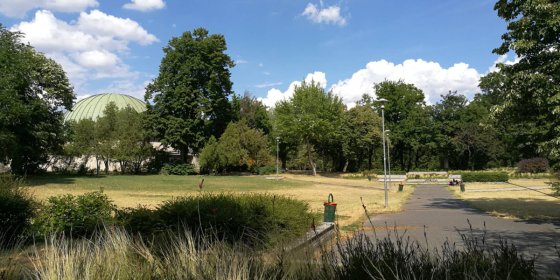
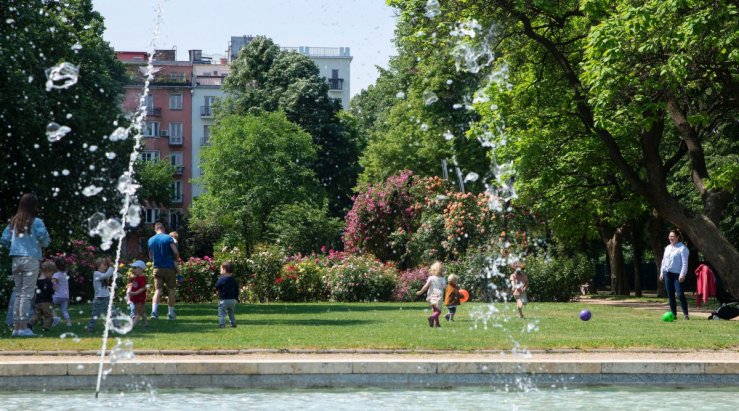
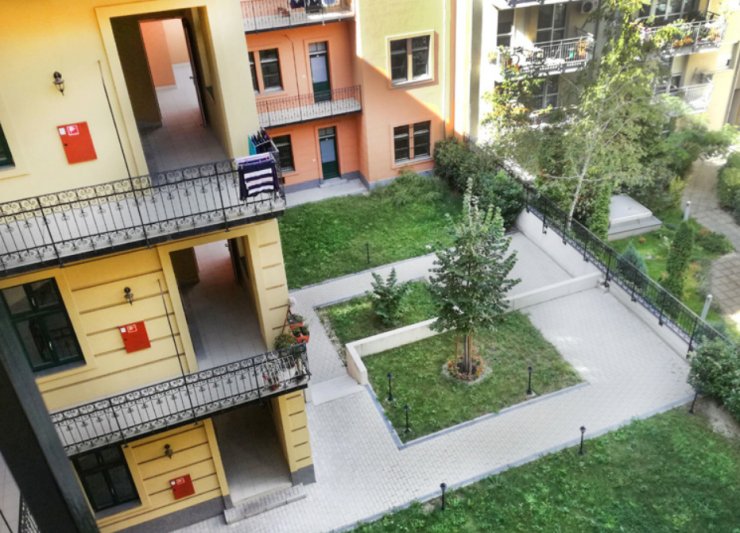

































Hozzászólások
Log in or register to comment!
Login Registration